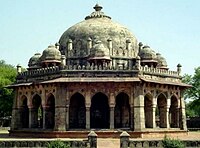
Back صوريون Arabic Imperiu suri AST سور ایمپراتورلوغو AZB সুরি সাম্রাজ্য Bengali/Bangla Dinastia Suri Catalan Suriden German Suria imperio EO Imperio suri Spanish امپراتوری سور FA Sur-dynastia Finnish
Sur Empire | |||||||||||||||||||||||
|---|---|---|---|---|---|---|---|---|---|---|---|---|---|---|---|---|---|---|---|---|---|---|---|
| 1538/1540–1555[a] | |||||||||||||||||||||||
![Map of the Sur Empire at its greatest extent under Sher Shah Suri (1538/1540–1545)[1]](http://upload.wikimedia.org/wikipedia/commons/thumb/a/a8/The_Sur_Empire_at_its_height.png/250px-The_Sur_Empire_at_its_height.png) Map of the Sur Empire at its greatest extent under Sher Shah Suri (1538/1540–1545)[1] | |||||||||||||||||||||||
| Status | Empire | ||||||||||||||||||||||
| Capital | Sasaram Delhi | ||||||||||||||||||||||
| Official languages | Hindavi[2] | ||||||||||||||||||||||
| Common languages | Persian Bengali Bhojpuri | ||||||||||||||||||||||
| Religion | Sunni Islam | ||||||||||||||||||||||
| Government | Absolute monarchy | ||||||||||||||||||||||
| Sultan | |||||||||||||||||||||||
• 1538/1540–1545 | Sher Shah Suri (first) | ||||||||||||||||||||||
• 1555–1556 | Adil Shah Suri (last) | ||||||||||||||||||||||
| History | |||||||||||||||||||||||
• Established | 6 April 1538/1540 | ||||||||||||||||||||||
| 22 June 1555[a] | |||||||||||||||||||||||
| |||||||||||||||||||||||
| History of India |
|---|
 |
| Timeline |
| Part of a series on |
| Pashtuns |
|---|
| Empires and dynasties |
The Sur Empire was an empire ruled by the Afghan-origin Sur dynasty in northern India for nearly 16 or 18 years,[3] between 1538/1540 and 1556, with Sasaram (in modern-day Bihar) serving as its capital. It was founded by Sher Shah Suri.[3][4]
The Sur dynasty held control of nearly all the Mughal Empire territories along the Indo-Gangetic Plain, from eastern Balochistan in the west of Indus River to modern-day Rakhine, Myanmar in the east. Even as Sher Shah Suri consolidated his power over North India, Eastern India was still considered to be the seat of Sur power in India. This is demonstrated by the fact that 8 of the 16 silver mint cities he established were in the region between Chunar and Fathabad.[5]
Cite error: There are <ref group=lower-alpha> tags or {{efn}} templates on this page, but the references will not show without a {{reflist|group=lower-alpha}} template or {{notelist}} template (see the help page).
- ^ Schwartzberg, Joseph (1978). A Historical Atlas of South Asia. University of Chicago Press. p. 44. ISBN 0-19-506869-6.
- ^ Alam, Muzaffar (1998). "The pursuit of Persian: Language in Mughal Politics". Modern Asian Studies. 32 (2). Cambridge University Press: 317–349. doi:10.1017/s0026749x98002947. S2CID 146630389.
Hindavi was recognized as a semi-official language by the Sor Sultans (1540–55) and their chancellery rescripts bore transcriptions in the Devanagari script of the Persian contents. The practice is said to have been introduced by the Lodis (1451–1526).
- ^ a b Hartel 1997, p. 262.
- ^ Berndl, Klaus (2005). National Geographic Visual History of the World. National Geographic Society. pp. 318–320. ISBN 978-0-7922-3695-5.
- ^ Asher 1977.